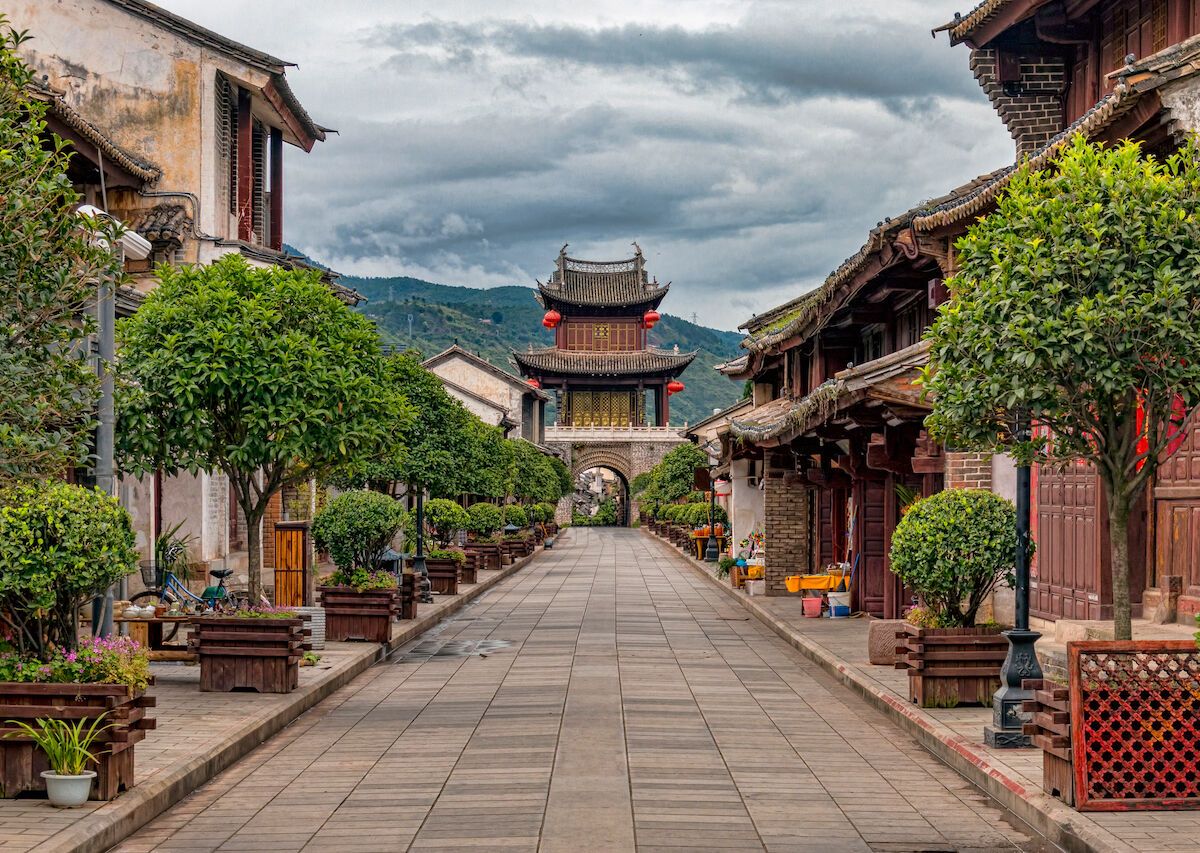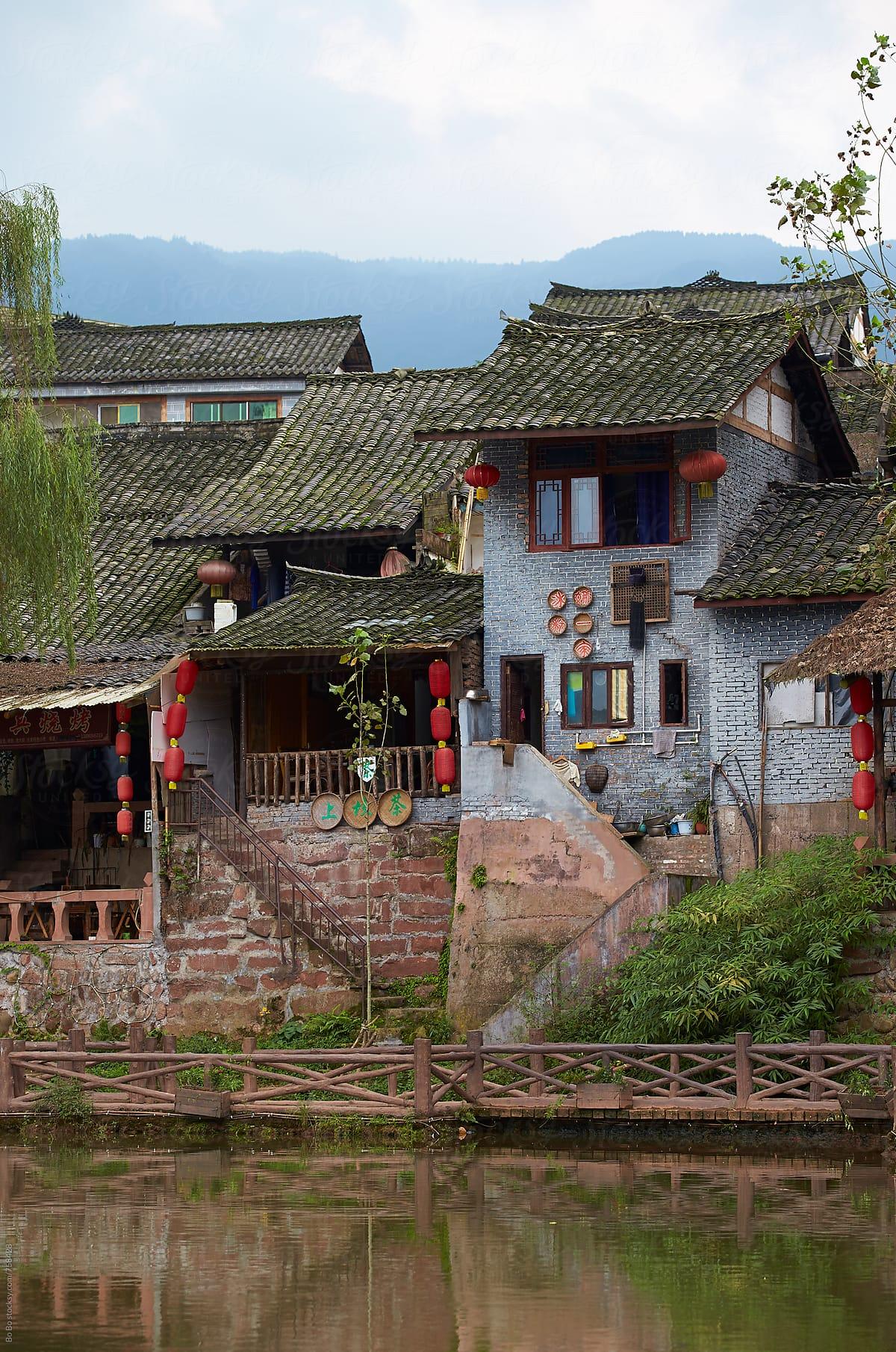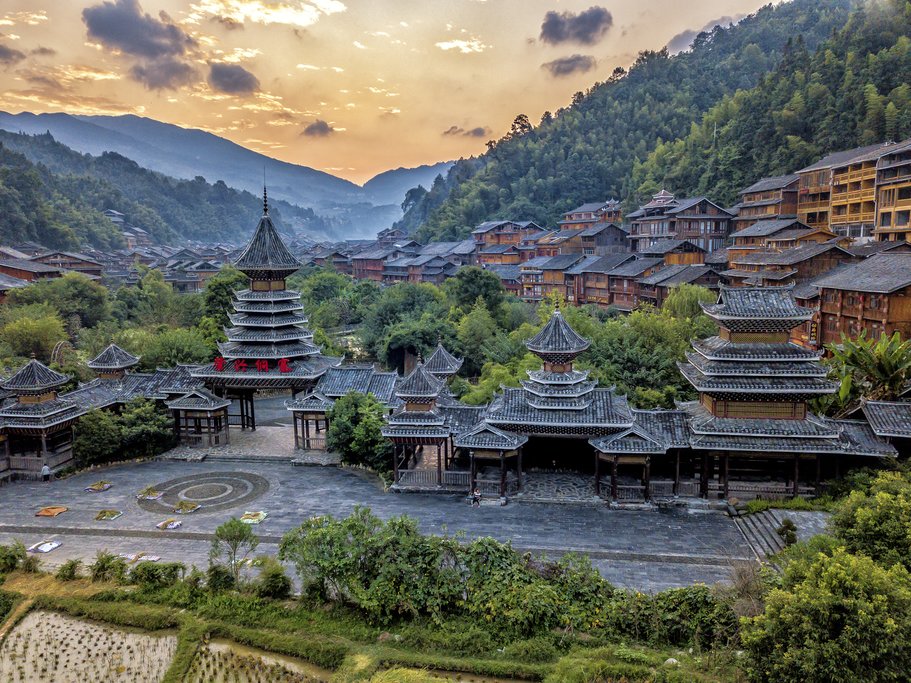Does the phrase "Chinese village" conjure images of ancient traditions, bustling markets, and a way of life seemingly untouched by the relentless march of modernity? Perhaps more than just a location, a "Chinese village" represents a microcosm of China itself a vibrant tapestry woven from history, resilience, and a dynamic interplay between the old and the new.
Venturing into a Chinese village is akin to stepping through a portal, back in time. Yet, to define a "Chinese village" is no easy task, as it is more than just a collection of houses. It's a living, breathing organism shaped by generations of inhabitants and the landscapes that cradle them. These villages stand as testaments to the enduring power of community and the resilience of the Chinese spirit, serving not only as living museums but also as incubators of innovation and economic transformation. From the secluded mountain hamlets to the thriving rural communities nestled in fertile plains, each village offers a unique lens through which to understand the multifaceted character of China.
To better understand the multifaceted nature of the Chinese village, let's delve into some crucial aspects that shape these unique communities. We will explore their historical context, examine their economic development, address the changing social dynamics and finally, touch upon their cultural significance.
Historical Tapestry
The history of Chinese villages is as rich and varied as the country itself. Many villages trace their origins back centuries, even millennia. These villages are often built according to the principles of feng shui, which harmonizes structures with the environment, creating a sense of balance and peace.
These ancient villages also stand as physical reminders of China's dynastic past. The layout of the village, the architectural style of the homes, and the intricate network of alleyways often reflect the social hierarchy and cultural values of the era in which they were founded. Village elders often serve as repositories of historical knowledge, and local historians meticulously preserve family genealogies and regional chronicles that illuminate the past.
The architecture in these villages often demonstrates the specific time period of the village's existence. For instance, the traditional siheyuan courtyard houses, common in northern China, represent a particular period of social and cultural development. In contrast, the distinctive tulou structures of Fujian province, communal earthen dwellings built for defense, exemplify a different historical and cultural context.
Economic Transformation
The economic landscape of Chinese villages has undergone a profound transformation in recent decades, particularly since the implementation of economic reforms in the late 1970s. The shift from a centrally planned agricultural economy to a market-oriented system has dramatically altered the livelihoods of villagers, with significant implications for their economic well-being.
Agriculture remains a cornerstone of many village economies. However, it has become increasingly commercialized. Farmers now cultivate crops for both local consumption and export, adopting modern farming techniques, utilizing advanced technologies, and integrating into global supply chains. This transition has created opportunities for increased income, but it has also presented challenges, such as the need for financial investment and the risks associated with market fluctuations.
Beyond agriculture, the rise of rural industry and entrepreneurship has further diversified the economic activities in Chinese villages. Small-scale manufacturing, processing, and service industries have emerged, creating employment opportunities and boosting local economies. Many villages have leveraged their unique geographical locations, cultural heritage, or resource advantages to develop tourism, handicrafts, and other specialized industries. The entrepreneurial spirit is alive and well in the villages of China.
The government's policies related to rural development, such as infrastructure investment and financial assistance for rural businesses, have also played a vital role in stimulating economic growth. These policies aim to reduce the income gap between urban and rural areas and facilitate the integration of rural economies into the national economy.
Shifting Social Dynamics
The social fabric of Chinese villages is evolving, mirroring the rapid societal changes that are occurring across China. Traditional social structures are gradually being challenged by the forces of modernization, and this change is creating tensions while also opening up new opportunities.
One of the most significant social changes is the rise of migration from rural to urban areas. Young people are increasingly drawn to cities in search of educational opportunities, better jobs, and a more dynamic lifestyle. This migration has led to a shortage of labor in some villages, particularly in agriculture, and has created a generation gap, as older villagers are left behind to manage the village's affairs. Additionally, with the absence of young people, there has been a rise in "empty nest" families, with the elderly residing in villages while their children live elsewhere.
Family structures and values are also changing. The traditional extended family, with multiple generations living together, is becoming less common as nuclear families become more prevalent. Women's roles in society are also evolving. The number of working women is increasing, and women are playing more prominent roles in village governance and economic decision-making.
Despite the winds of change, the values of community and social harmony remain deeply ingrained in village life. Local customs, traditions, and festivals continue to be celebrated, reinforcing social bonds and fostering a sense of belonging. Village committees and other local organizations play a crucial role in resolving conflicts, providing social services, and promoting collective well-being.
Cultural Significance
Chinese villages are invaluable repositories of cultural heritage. They preserve ancient traditions, distinct dialects, and unique forms of artistic expression that reflect the diverse tapestry of Chinese civilization. The cultural significance of these villages also goes beyond the tangible assets, such as architecture and artifacts.
Traditional festivals and ceremonies are often the vibrant heart of village life, providing opportunities for communities to come together, celebrate their heritage, and reaffirm their cultural identity. Performances of traditional opera, folk music, and dance are often commonplace, passing down cultural narratives and artistic skills from generation to generation.
The unique dialects spoken in many villages contribute to China's linguistic diversity, helping to maintain the linguistic landscape. Preservation of these dialects is also crucial for the cultural significance of these areas. Furthermore, villages often have unique artistic traditions. These can range from handicrafts, such as pottery, weaving, and paper-cutting, to traditional culinary practices, which showcase the regional flavor and history of the areas.
The preservation of cultural heritage in Chinese villages faces challenges, including the pressures of modernization, economic development, and migration. However, there is a growing recognition of the importance of preserving these cultural assets, leading to initiatives aimed at protecting historical sites, supporting traditional crafts, and promoting cultural tourism. These initiatives can help ensure that the cultural richness of Chinese villages is appreciated for future generations.
Challenges and Opportunities
The "Chinese village" faces a complex array of challenges and opportunities in the 21st century. The economic, social, and environmental realities confronting these communities are changing at an unprecedented rate, requiring adaptation and innovation to secure their future.
Environmental sustainability is a primary concern. Rapid economic development and urbanization have led to environmental degradation in some villages. Pollution from industrial activities, overuse of natural resources, and climate change pose threats to the environment and the health of village inhabitants. Sustainable practices, such as environmentally friendly agriculture, renewable energy development, and waste management, are essential to ensure that the villages can continue to thrive.
The preservation of cultural heritage remains a significant challenge. The pressures of modernization can lead to the erosion of traditional values and customs. Therefore, the government, community leaders, and villagers must work together to preserve and promote local traditions. Cultural tourism offers one means of doing this. It can generate income and awareness while also giving visitors a chance to experience the local culture firsthand.
Digital technologies also present both challenges and opportunities. Access to the internet and digital devices can help the villagers with education and business development. However, it can also lead to a digital divide if the villagers lack the skills and resources needed to fully participate in the digital economy. Investments in digital literacy and infrastructure can help bridge this divide and promote equitable development.
The Future of the Chinese Village
The future of the "Chinese village" is uncertain. However, the adaptability and resilience of the Chinese people indicate that these villages will endure, evolving to meet the needs of a changing world.
Sustainability is essential for all Chinese villages. Economic development must be balanced with environmental protection. Preserving the local culture is key. Investing in education, healthcare, and infrastructure is also crucial. In addition, leveraging the power of digital technologies is extremely important.
The government's role is important. The government should be actively involved in supporting rural development, promoting inclusive growth, and protecting cultural heritage. At the same time, the villagers must take responsibility, encouraging community engagement and preserving their unique traditions.
The success of the Chinese village is intertwined with that of China as a whole. As China continues its trajectory of growth, the villages will play an ever-increasing role in the country's future. They will be key in the economy, cultural identity, and sustainable development. The "Chinese village" of tomorrow will likely be a more vibrant, modern, and sustainable place that honors its past while embracing the future.
In conclusion, the "Chinese village" is an enduring symbol of the Chinese experience. It is a reminder of the past, a participant in the present, and a blueprint for the future. Each village is a testament to the strength and adaptability of its inhabitants. It also showcases the rich and varied story of China. As China evolves, so too will its villages. Their story is a symbol of the human spirit, of the triumph of community, and of the possibility of a brighter future for all.


